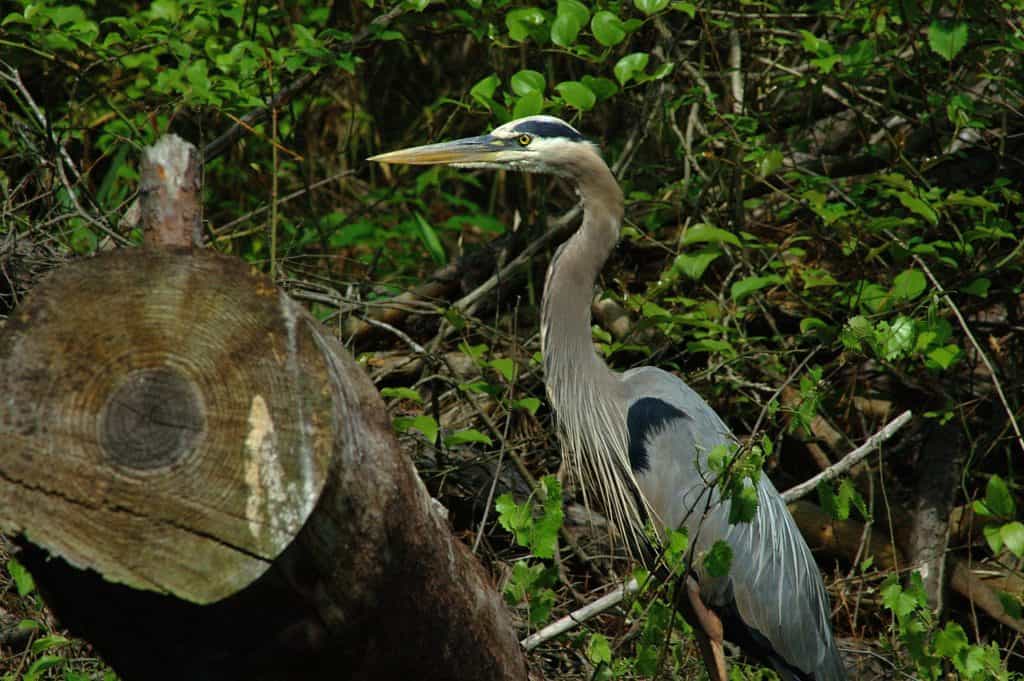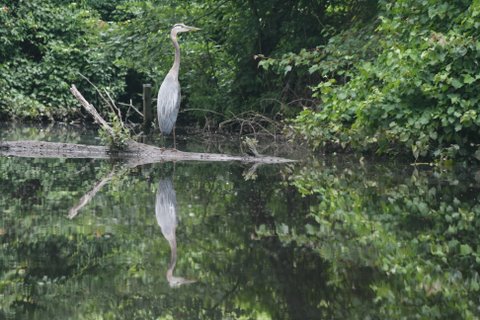Great Blue Heron

One of the largest and common herons in North America, the tall, long-legged Great Blue Heron is easily spotted throughout the Great Dismal Swamp. In flight, the Great Blue Heron curls its neck into a tight “S” shape and its wings span up to 6 feet wide. Great Blue Herons appear blue-gray from a distance, with a wide black stripe over the eye. These magnificent birds live in both freshwater and saltwater habitats, and also forage in grasslands and agricultural fields.
Around summer and spring, Great Blue Herons breed all over North and Central America, most of Canada, the Galápagos Islands, and the Caribbean. Herons eat anything within striking distance, including fish, amphibians, reptiles, small mammals, insects and other birds. Herons walk slowly or stand absolutely still for a long time, and wait for their prey. As soon as the prey is close enough, they deliver a deathly blow by thrusting their sharp bill in the water, and swallowing the entire prey with ease.

Great Blue Herons generally have one mate per breeding season. Males will perch at nesting sites, stretching the neck and fluffing their plume of neck feathers to attract females. These birds use large nests consisting of bare sticks and branches, which are used for multiple breeding seasons. Nests are constructed in tall trees, usually 100 or more feet off of the ground. Herons nest in large groups, called rookeries, consisting of 500 or more individual nests.
Blue herons breed from March to May and lay between 2 to 7 pale blue eggs. Both parents take turns incubating the eggs, which hatch after 26 to 30 days. After living in the nest for two months, the chicks are ready to leave the nest and survive on their own. The average lifespan for a great blue heron is around 15 years.

When visiting the Great Dismal Swamp, keep your eyes peeled for this beautiful winged bird, which represents stillness and tranquility.
Source:
https://www.allaboutbirds.org/guide/Great_Blue_Heron/lifehistory
http://www.biokids.umich.edu/critters/Ardea_herodias/
Images:
Ben Casey & Mike Siba
